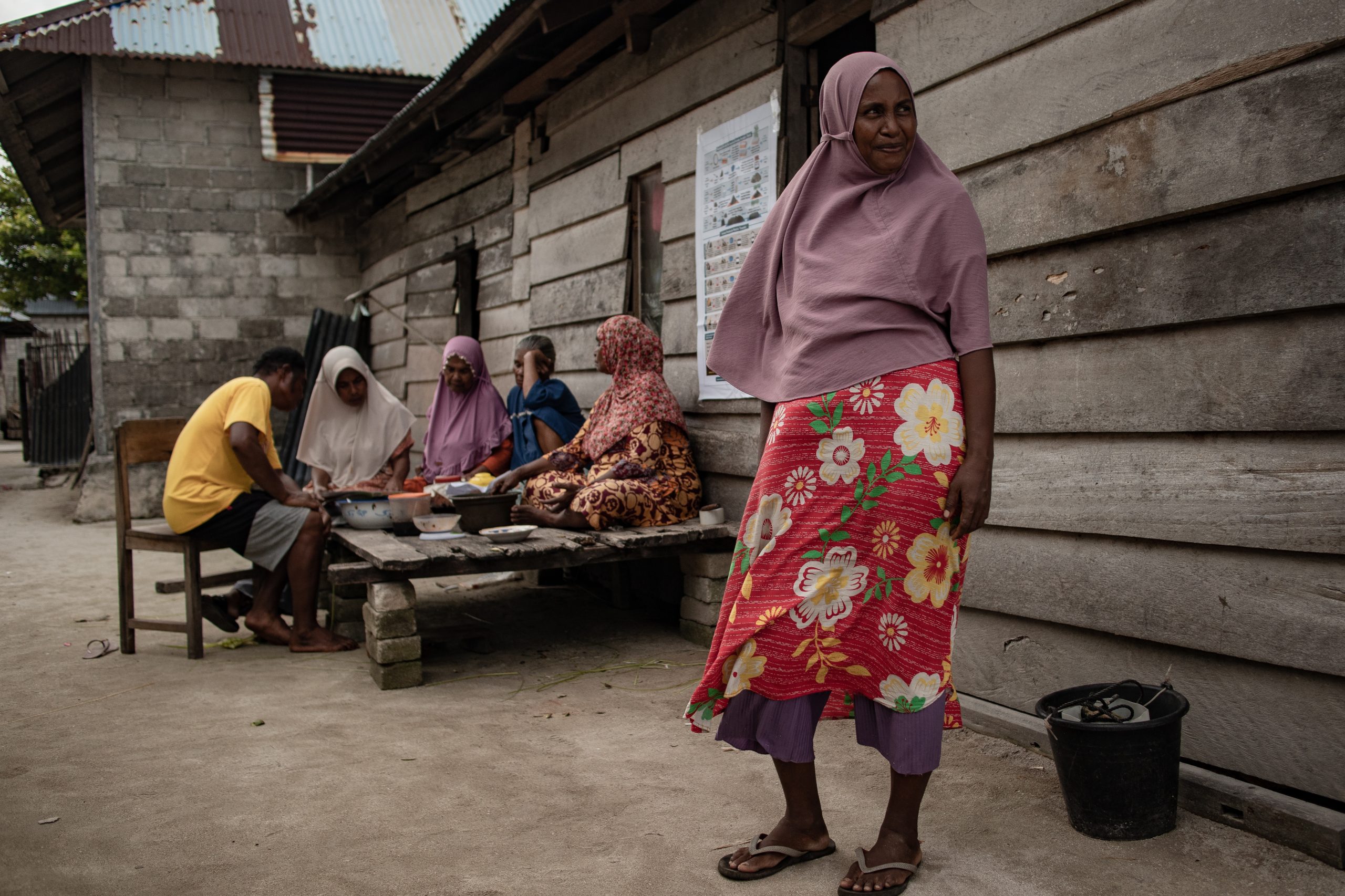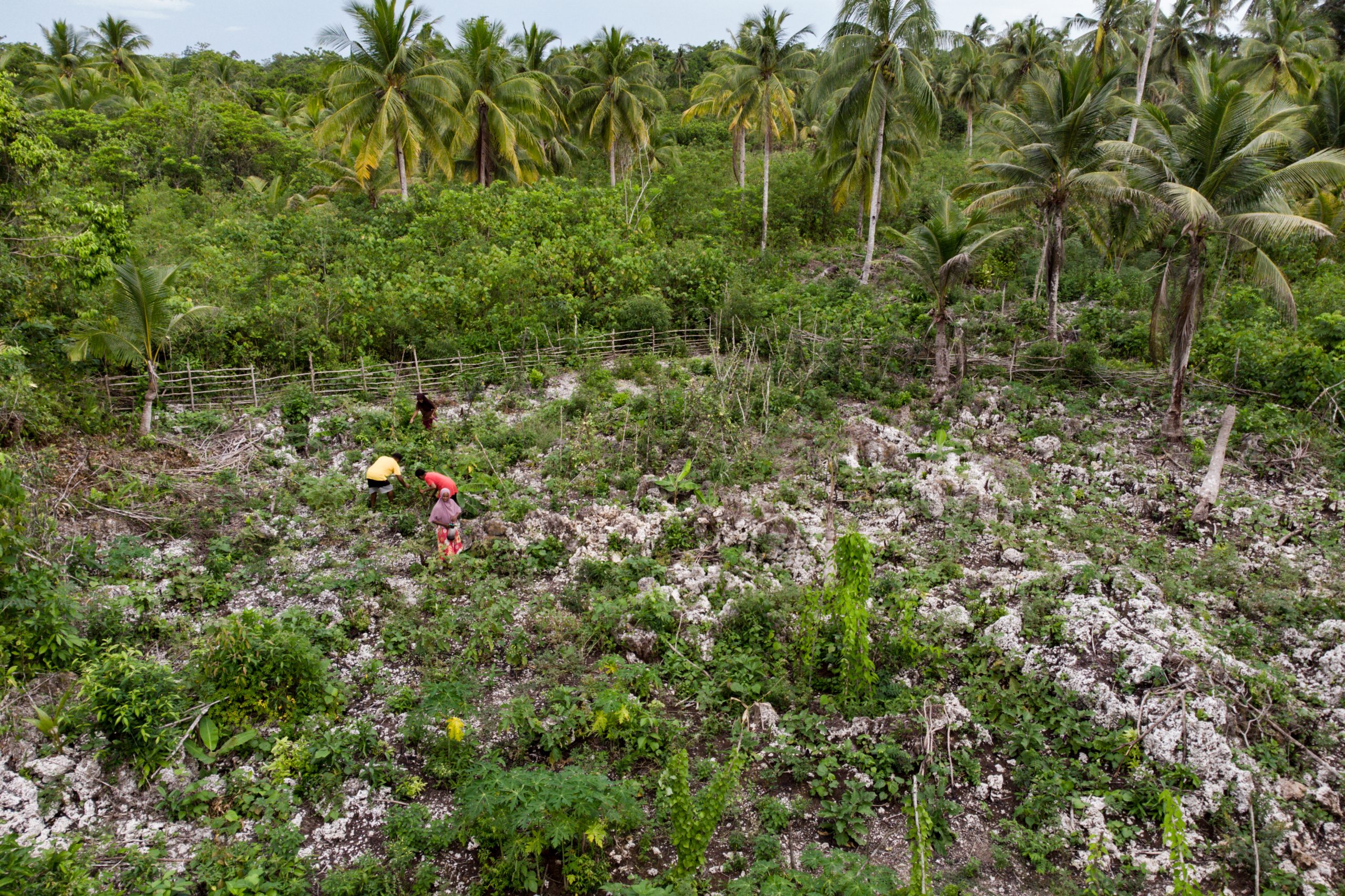
That morning, four women sat on a plank patio on the side of Rafia Rumatiga’s simple wooden house. The house is located in Negeri Pulau Panjang, Pulau Panjang Sub District, Seram Bagian Timur District, Maluku Province.
They were not chilling or chatting, but focused on opening a ripe papaya and scooping out the flesh. The other two were carefully slicing brown sugar into thin slices.
Rafia, a woman born in 1985, then took a digital scale. She weighed the papaya and brown sugar in equal amounts. She explained that these women were making organic fertilizer for the plant roots and leaves.
“It is a one-to-one ratio,” Rafia said loudly. “One kilogram of papaya, one kilogram of brown sugar.”
This mixture is then put into a jar, tightly closed with paper, and tied with a rubber band to prevent the air from infiltrating. After being fermented for seven days, the processed liquid becomes liquid organic fertilizer or, so-called by the people, natural nutrition.
Rafia gained this knowledge from a training held by the BangKIT Program. This nutrient can last up to one year and is used for various horticultural crops such as chilies, eggplant, mustard greens, and peanuts.
Towards the end of 2023, when the village planning process began, Rafia Rumatiga and 42 others participated in the village planning process facilitated by the BaKTI Foundation through the Inclusive Rural Community Livelihood Development Program in Eastern Indonesia (BangKIT). They had the meeting at Pulau Panjang Sub District Office to jointly identify existing potential, how they survive, and meet their needs. Village sketch was one of the analytical tools used to map village conditions and to see the potential that the community might have missed so far.
The village sketch showed that Negeri Pulau Panjang has good agricultural potential. Coconut, taro, cassava, and various fruits grow well on Pulau Panjang. The analysis was then continued using the seasonal calendar and institutional diagram. From the analysis, they formulated objectives to increase agricultural output and farmer income.
Yet, diseases and pests stroke their plants. A training on organic fertilizer production was then proposed by the community. Once again, Rafia became one of the trainees who is always excited about practicing and sharing the knowledge from the training.
This fertilizer is special not only due to its ingredient availability – papaya and brown sugar – but also its economical use. One tablespoon of fertilizer solution is enough to be dissolved in five liters of water, then sprayed over the plants.
“We only use the small sprayer, not the 15-liter tank, because it’s already water,” said the 40-year-old woman.
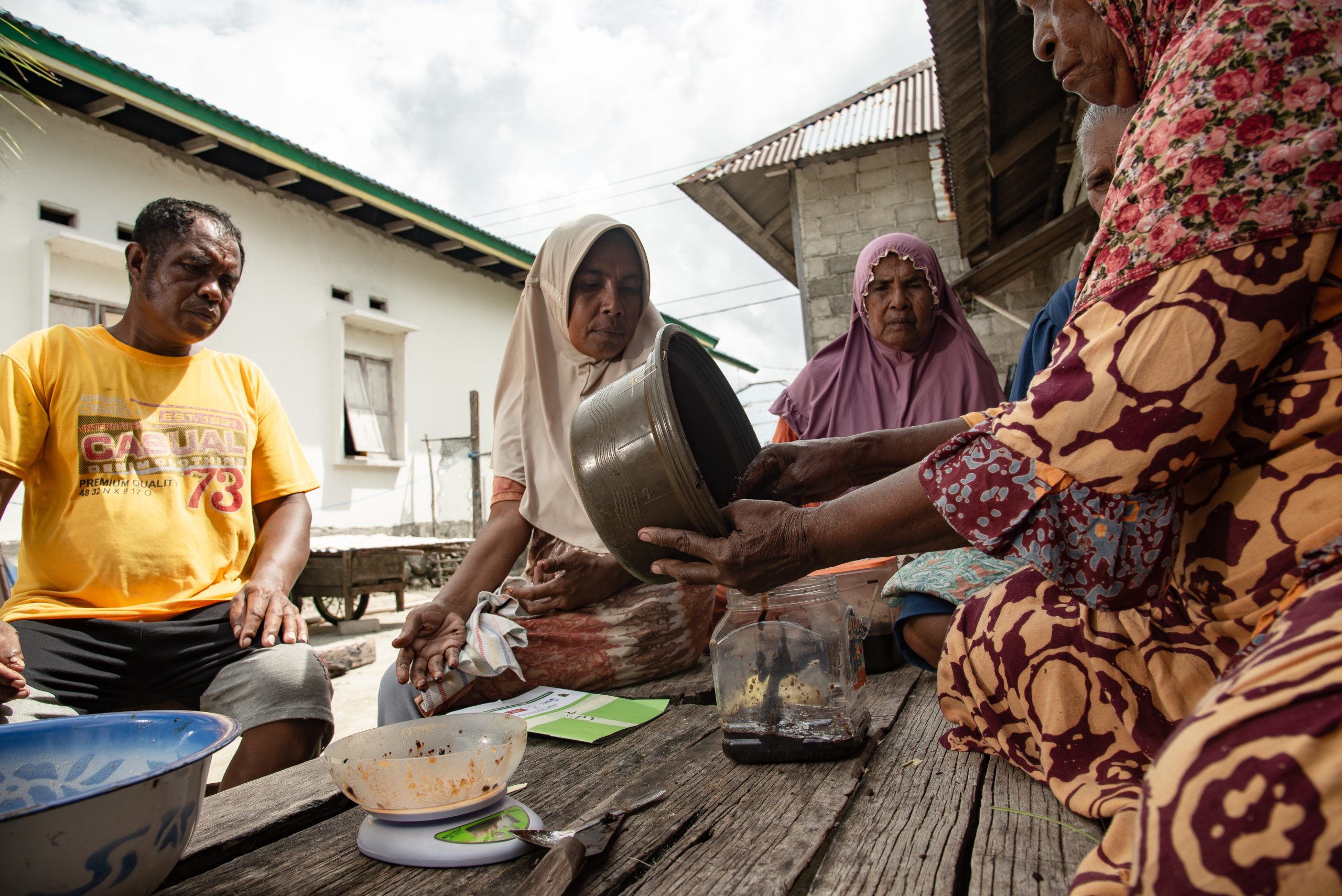
Wood Ashes to Organic Nutrients
Pulau Panjang is one of the sub-districts detached in 2011 with regard to the District Regulation (Perda) of Seram Bagian Timur, Number 11 of 2011, ratified by the first Regent of Seram Bagian Timur, Abdullah Vanath.
This sub-district consists of six villages, namely Ruku-Ruku, Perik Basaranggi, Magat, Lalasa, Pulau Panjang, and Argam. It was more than a decade after the expansion that electricity began to enter this area. Yet it was limited from six in the evening to six in the morning.
Panjang Island is located between Gorom and Manawoku Islands, accessible only by boat. The trip to Panjang Island may take 30 minutes from Gorom Island, using a long boat with a 30 PK engine.
That afternoon, Rafia was busy preparing ingredients for organic fertilizer such as brown sugar and ripe papaya. Rafia said that previously, papaya was only used for cooking when young or consumed when ripe. After attending training at the Pulau Panjang Sub District Office in 2024, she and three other women learned to use papaya as fertilizer.
“We were taught to make nutrients. We didn’t know that brown sugar could be used as fertilizer,” said Fia, Rafia’s nickname.
Rafia learned types of organic nutrients to fertilize plants. For example, brown sugar mixed with banana flower, for the leaves. For strengthening the roots and stems, papaya is mixed with brown sugar. Lastly, brown sugar mixed with garlic to overcome pests.
All ingredients are mixed in a one-to-one ratio. To save money, she often uses a measurement of one kilogram of brown sugar, divided into a quarter kilogram. Because brown sugar is relatively expensive, 30 thousand rupiahs.
Before organic nutrition, she used firewood ash to fertilize plants. It has been used for generations from the ancestors until today. Likewise, people on Panjang Island, the majority, use firewood ash. They do not know how to make nutrients. Ash cannot repel the pests.
After learning about nutrition, she immediately applied it to her garden. Now, she plants chilies, eggplants, and beans, spraying the nutrients every 10 days, from planting to harvest.
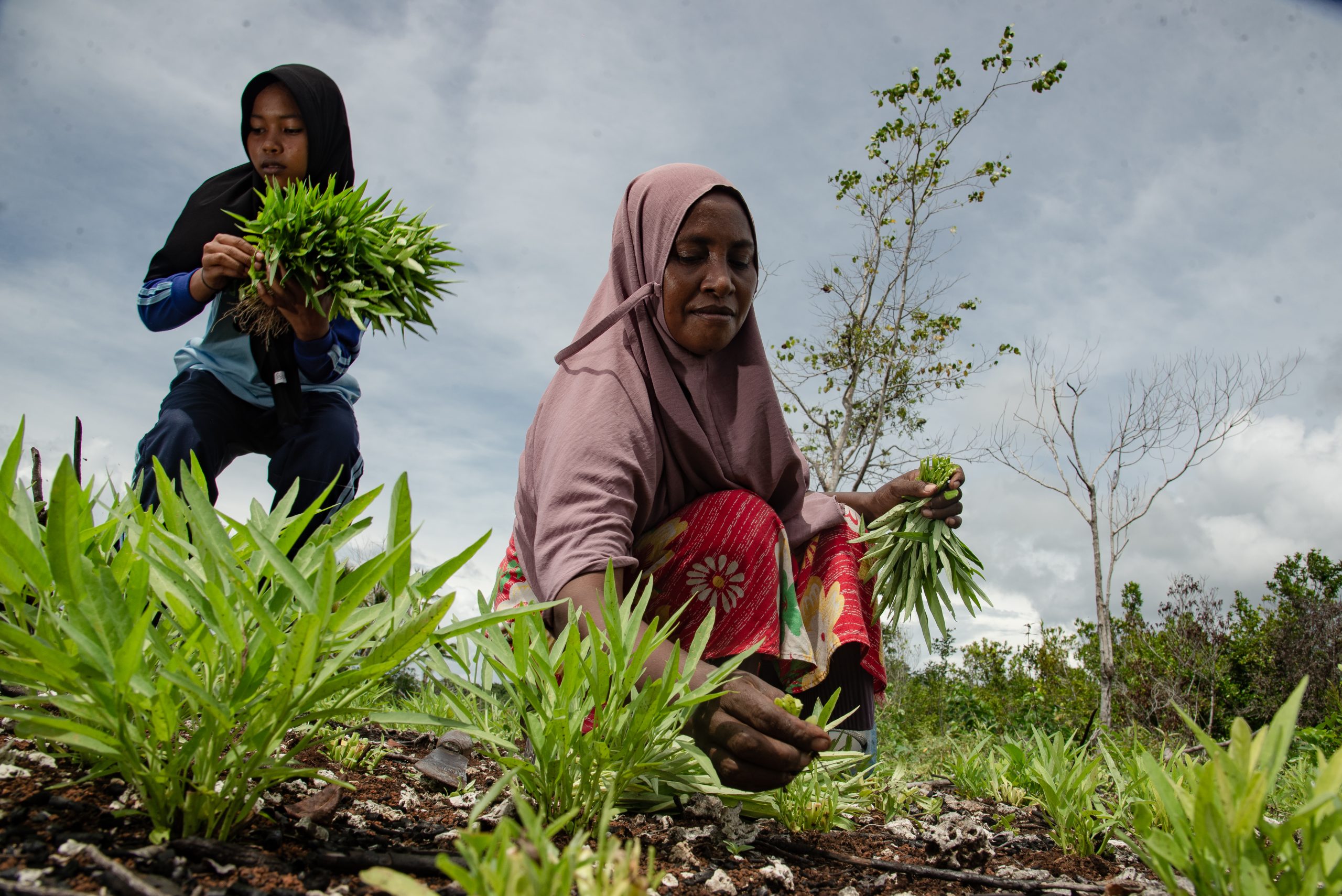
“We’ve only made nutrition twice,” she said. “No one has taught us about nutrition before. We’re excited.”
Asmia Bugis, Rafia’s older sister, also attended the training organized by the BangKIT Program. Yet, she admitted that she still needed guidance in making nutrients. Asmia had not applied it to the plants in her garden. When planting nuts without nutrients, her plants were damaged by pests.
“I once planted peanuts without nutrients, and they were eaten by pests,” Asmia recalled regretfully. “I already know. I have to use this knowledge.”
Sago and Cassava Are Prominent
Despite the horticultural crops, Rafia said, sago and cassava are the main source of income for the community, and also staple foods. One bundle of sago containing 20 stems is sold for 10 thousand rupiahs. However, processing it is exhausting – harvesting sago takes one day, grating and drying takes two days, and that too depends on the sunlight.
“Usually, I can make more than 20 bundles a day,” she said.
After being packed, the sago is put into sacks, each containing 40 bundles. If only two sacks of sago are taken to Gorom Island, she transports them using her boat. If it is three to four sacks or more, she rents a speedboat (jonson) for 500 thousand rupiahs per day, round trip.
“It has to be more than two sacks to cover the rental costs,” she explained.
In addition to sago, she makes an additional income from chili and eggplant. She sells chili for 10 thousand rupiahs per can of milk, and 10 thousand rupiahs for seven eggplants. Usually, she gets 50 – 60 thousand rupiahs from selling eggplants. That is not enough to save because she has to meet the family’s daily needs.
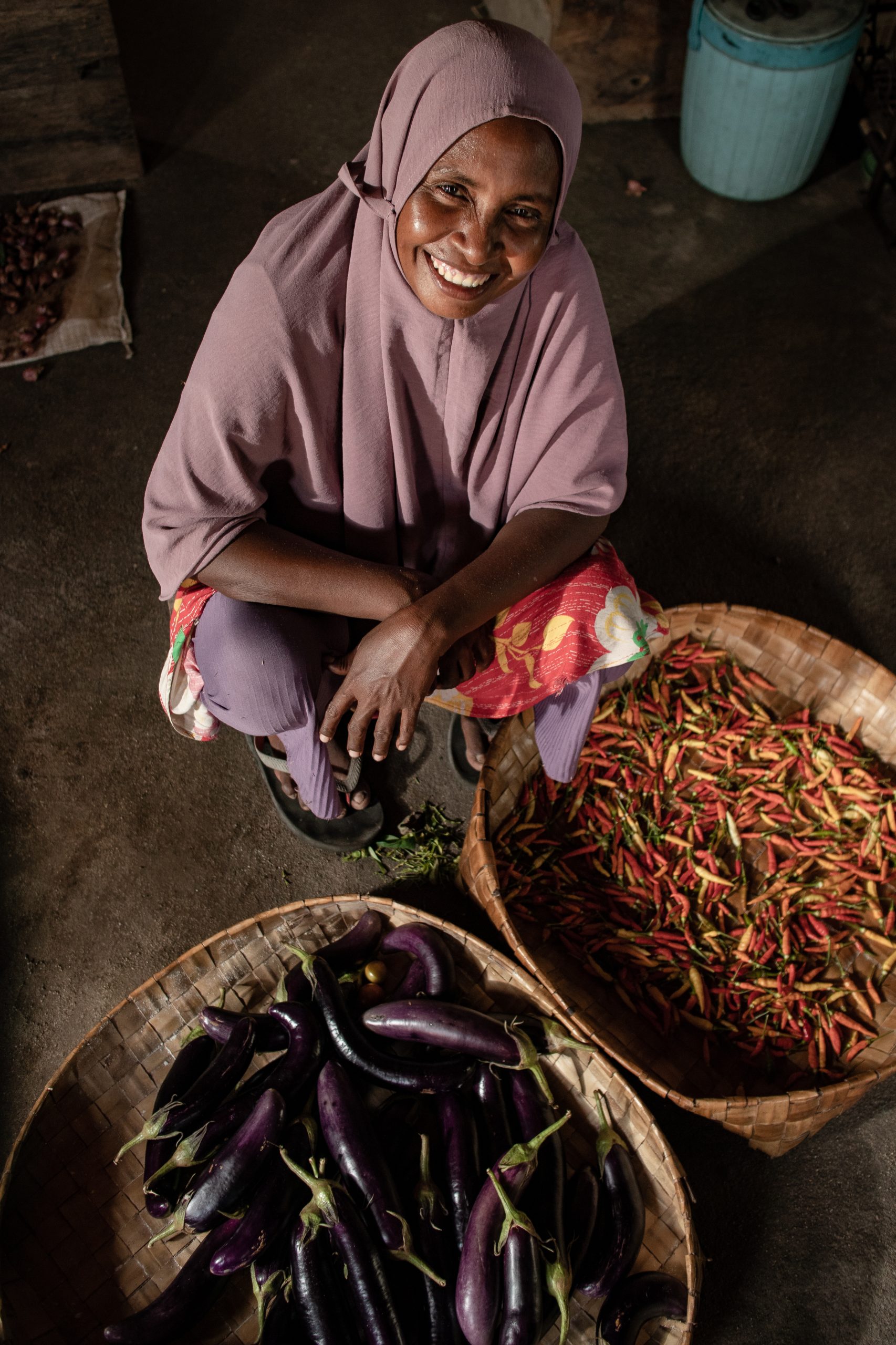
Let alone, she planted only about 20 eggplant trees, adjusting her and her husband’s capacities in managing the land.
To open new land, we must hire people to pry the rocks. “The land here is mixed with rocks. It’s hard to cultivate.”
In one plot, she planted various plants, chilies, eggplants, and peanuts. Rafia felt grateful if the yields were good. She could get additional income. Eggplants and chilies were harvested last month. As for water spinach and mustard greens, she had not planted them again after the harvest last Eid. There were no seeds. Last time, she received seeds from the BangKIT Program – one kilogram of water spinach and one can of mustard greens.
“The seed assistance was planted twice. After the last harvest, we had no more,” said Fia.
Hope and Resilience from A Remote Island
The story of Rafia and the women of Pulau Panjang shows how new knowledge can significantly change the way they farm. From only using wood ashes, they are now learning about simple fermentation-based technology that is environmentally friendly and cost-effective. The liquid organic fertilizer they make in their kitchen is the key to increasing crop productivity, reducing pest damage, and reducing dependence on expensive and difficult-to-access chemical fertilizers.
Despite the limited access to water and electricity, and the rocky soil that makes farming harder, the spirit of women like Rafia and Asmia remains. With simple training and community support, they have managed to grow new hope in their gardens.
“It’s hard indeed, but if the plants grow well, I’m happy. I can sell them, eat them, and, eventually, I can support the family,” Rafia concluded.
